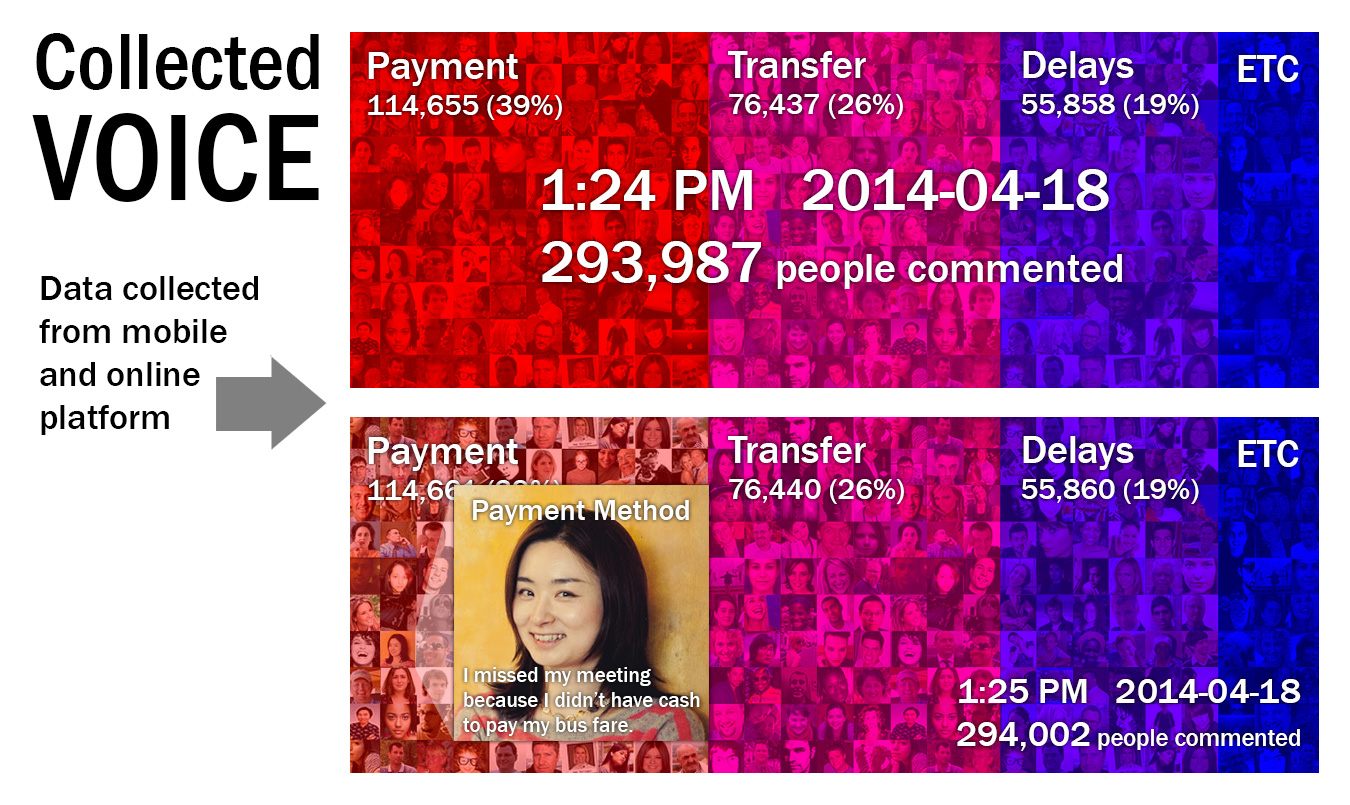Collected Voice to innovate TTC
1st week mini project: Julie and Debbie
Human-Centered Design for Social Innovation +Acumen
I have started taking this online course with Debbie Kwan (Awesome Health Communicationist!). Our first meeting was really productive. This is what we came up with after reading the mini challenge from the first week of the course manual.
How could we improve the transit experience in Toronto?
We decided to focus on the TTC and its public transit services to residents and visitors. Almost everyone has a complaint or negative experience to share about the TTC, but improvements to the system remain slow and rare.
Why is this so?
Solutions sometimes seem so simple and different proposals are always on the city’s agenda. They say, for example, we need to build more rail lines or we need to put more buses on the road or we need to create more channels to communicate service changes. But, TTC users are not seeing progress soon enough and have little confidence that decision makers have the direction or plan in place to shape our public transit system into one Torontonians can be proud of.
We propose to help decision makers find a clearer and evidence-based direction.
Currently, it appears that a large proportion of complaints about the TTC are shared in conversation or sporadically on social media. The TTC website has a Compliments, Complaints and Suggestions process, but the information submitted is not shared with the public.
To create a space for people’s voices and to make their feedback about the TTC more transparent, we are proposing a public-facing platform that collects and visually represent collected individuals’ comments. This platform will also classify the data and visually present the different and most frequent types of complaints made by end users (e.g. fare payment methods, route availability, communication processes). Demonstrating the service areas that demand the most attention would enable decision makers to hear directly from end users, recognize their needs and make transit plans based on evidence. This type of tool can be expanded as a fundraising platform as well.
Don’t forget to check out what others are saying.
We all deserve a better transit system.

